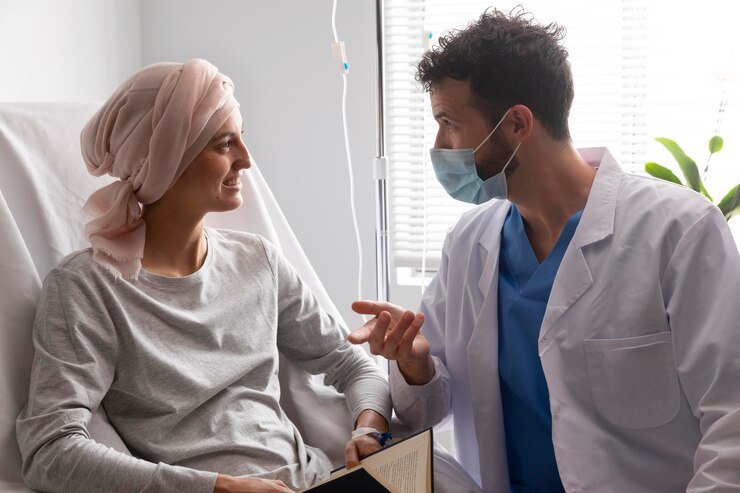So much has been said about cancer but very few people understand what it is and how it makes havoc in the body. It is one of the major causes of death in the world, but early detection with advanced treatments is giving hope to millions of people to survive. In simple words, cancer arises when cells in our body begin growing uncontrollably. While most cells undergo a normal cycle of growth, division, and death, these cells proliferate without stopping and can spread to other parts of the body as well. In this article, we will look at what is cancer, its causes, symptoms, diagnosis, and how to prevent it.
Also Read:- Mouth Ulcer Vs. Cancer: How To Tell The Difference
What is Cancer?
Cancer is described as a group of diseases in which abnormal cells grow and multiply out of control. Normally, cells in our body grow and divide in a controlled way; thus, the body heals and functions correctly. However, when this control is lost, cells keep dividing even when they actually should not divide, which may result in the formation of masses, although these masses do not always pose danger; some are simply benign, meaning that they cannot spread. But while others are malignant, or cancerous, ones that can invade surrounding tissues and spread to other parts of the body through the bloodstream or lymphatic system. It is metastasis which makes cancer lethal.
Cancer takes many forms, and each is identified by the name of the body part from where it begins. For example, if it starts in the breast, the name is breast cancer; if it starts in the lungs, it’s called lung cancer. Some cancers, such as leukaemia, begin in the blood and don’t form a solid tumour.
What Causes Cancer?
Changes, or mutations, in the cells’ DNA cause cancer. These changes can occur spontaneously when cells divide or as a result of exposure to certain risk factors. Of these, some of the most common ones include:
- Genetics: You may have inherited faulty genes from your parents that make you likely to develop certain cancers. For instance, the mutation of the BRCA1 and BRCA2 genes increases the risk of breast and ovarian cancers.
- Environmental Factors: Exposure to hazardous substances over a long period, such as tobacco smoke, or the sun’s UV rays, can damage DNA in cells, thereby leading to cancer. For instance, lung cancer is caused by smoking, and UV rays are among the most common causes of skin cancers.
- Lifestyle Factors: Bad lifestyle factors may include unhealthy behaviours such as bad diet, insufficient exercise, excessive alcohol intake, and obesity. For example, a diet characterized by increased intakes of processed meats and low intakes of fruits and vegetables has been associated with colorectal cancer.
One must recognize that even though these risk factors increase the likelihood of cancer, they do not ensure anyone develops the disease. Some people with cancer possess no known risk factors.
Cancer Symptoms
There are no specific symptoms of cancer, and their appearance depends mainly on the organs affected by the disease and its stage. Most symptoms are quite generalized and can appear in most diseases, while others are peculiar to some diseases. Amongst very common signs include:
- Unaccounted weight loss: Unexplained weight loss can indicate several different types of cancers.
- Fatigue: Feeling tired all the time is another warning symptom, even when resting. This is commonly experienced with leukaemia and several other cancers.
- Swelling or Lumps: A lump that does not go away or continues to grow may be an indication of cancer.
- Skin Changes: New moles, sores that don’t heal, or changes in the colour or shape of existing moles could be signs of skin cancer.
- Pain: Persistent bone, abdomen, or back pain might indicate cancer.
- Bleeding or Discharge: Coughing up blood or blood in your stool or urine.
How is it Diagnosed?
The process of diagnosing cancer includes several stages, especially with a medical history and physical exam. If there is suspicion of cancer, the doctor may prescribe further tests, including:
- Imaging Tests: X-rays, CT scans, MRIs, and PET scans help doctors take pictures of the inside of the body and look out for unusual growth.
- Biopsies: A biopsy is a process in which a small sample is taken from the suspected tumour tissue and placed on the microscope slide to figure out if it is cancerous or not.
- Tests: Some cancers begin to produce substances known as tumour markers, which are detectable in the blood.
Can It Be Prevented?
Even though not all cancers can be prevented, there are quite a few things that you can do to decrease the risk of getting cancer. Some include the following:
- Quit Smoking: Tobacco is the leading cause of cancer worldwide. Lung cancer is one of the kinds of cancer caused by tobacco.
- Limit Alcohol: These cancers include the liver, breast, and colon, among others. Limiting alcohol intake would immensely reduce your risks.
- Healthy Diet: There’s ample evidence that making sure you consume enough fruits, vegetables, and whole-grain foods keeps the likelihood of cancer at bay.
- Protect Your Skin: Protect skin damage from the sun. Use sunscreen to minimize the risk of cancer.
- Exercise regularly: In many cases, exercise maintains a healthy weight, which, by itself, lowers the risk of any cancer.
- Vaccination: Prevent other viruses or infections that cause cancer. For example, vaccines are available against the human papillomavirus, a virus that causes a percentage of cervical, as well as other cancers.
Conclusion
Cancer is a complex and varied group of diseases, but if you learn the basics you can begin the steps to prevention, early detection, and even treatment. Some causes for cancers, such as genetics, are out of our hands, but some lifestyle choices can greatly decrease our risk of developing cancers. Regular checkups and paying attention to warning signs can lead to detecting cancer in its earliest stages and when it will most effectively be treated. If you have concerns or questions about cancer, talk with your healthcare provider. Such a person will give you customized information and advice.
So, by being informed and making healthy choices, you can reduce your risk and contribute to a future where more people survive and thrive after a cancer diagnosis.


